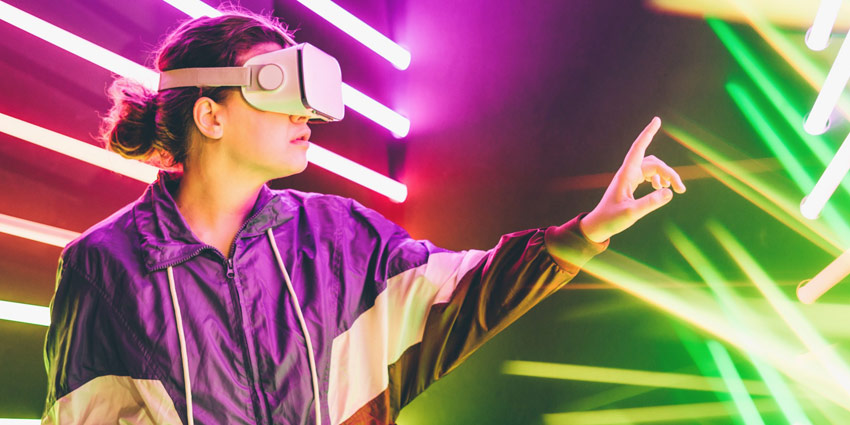Most of us have heard of virtual reality and augmented reality at this point. With virtual reality, you can put on a headset and step into a virtual world, where it’s possible to interact with digital content. You can explore an entirely different space, outside of the reality you think you know. Augmented reality, on the other hand, adds another layer to your existing landscape.
With augmented reality, you add extra elements into your existing environment, either using a headset or a camera. You can still see and interact with the world around you, but there are other elements available too. So, that’s VR and AR – but what about MR?
What is Mixed Reality?
MR, or Mixed Reality, is a blend of the digital and physical worlds that breaks down the walls between virtual, digital, and physical interactions. This new reality comes from updates in computer vision, display technology, and new input systems. However, mixed reality is actually a term that’s been around for a lot longer than you might think.
The application of Mixed Reality first appeared in a paper by Fumio Kishino and Paul Milgram, looking at mixed reality visual displays. Since this paper looked at things like the ‘virtuality continuum’ and the taxonomy of displays, a lot of things have changed. Mixed reality now includes spatial sound, environmental input, positioning and locations in virtual and real spaces, and more.
Over the past few decades, exploration into the relationship between computer input and human beings has continued, leading to a discipline called human computer interaction or HCI. Human beings can input their information through various means, including voice, touch, mouse connections, and so much more.
Developments in the use of sensors and processing in the mixed reality landscape is giving rise to a new era of computer input from every environment. The interaction between environments and computers is basically the perception of the landscape, environmental input addresses everything from a person’s position in the world, to the surfaces and boundaries of their space. Environmental input can also include environmental sound and ambient lighting.
Understanding the Spectrum for Mixed Reality
Companies like Microsoft that are now exploring the world of mixed reality, look at the MR landscape as a spectrum. According to them, mixed reality blends the physical and digital worlds, which are two realities defining different edges of a spectrum called the virtuality continuum. The realities that exist throughout that spectrum are the mixed reality spectrum.
For instance, Microsoft offers two kinds of devices to deliver mixed reality. The first is a holographic device characterised by its ability to place digital content into the real world, making you think it’s really there. The other devices are “immersive” devices, which are characterised by their ability to create a sense of presence and replace the physical world with the digital.
Technology advancement is what is now making mixed reality a possibility for companies. There are no devices that can run experiences for the current consumers of mixed reality across the entire spectrum. However, Microsoft does offer a platform for developers and device manufacturers, where they can experiment with the various components of the mixed reality spectrum.
Immersive or Holographic?
Mixed reality is all about combining the virtual and augmented reality elements that can transform the world in a more immersive way. Microsoft recently introduced it’s most exciting development in the mixed reality environment in the form of the VR: HP Reverb G2. This is the company’s approach to immersive MR, which combines industry-leading spatial audio, visual quality, motion training, ergonomics and more.
The solution combines better tracking solutions with four built-in cameras integrated with a set of ergonomic controllers. There’s also industry-leading IPD lenses and a flexible facemask to offer insights into a new level of VR.
The VR: HP Reverb G2 is towards the far right of the mixed reality spectrum because it invites users into a fully new digital environment. Users are unaware of what happens in the physical landscape around them here. In the future, if a company can create a fully mixed reality experience, then it will exist within the middle of the spectrum.
https://youtu.be/Bxp9xxgEfak
In the space of complete mixed reality, virtual elements and real elements of different worlds would interact more completely, allowing for a unique journey between modern landscapes.







